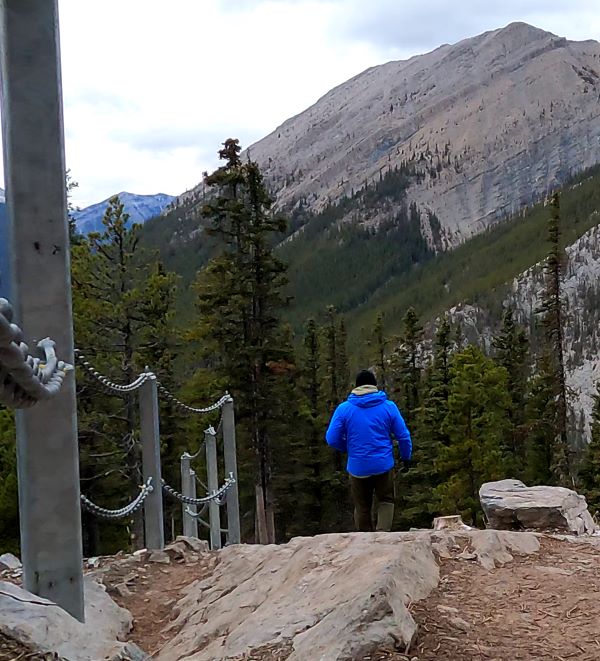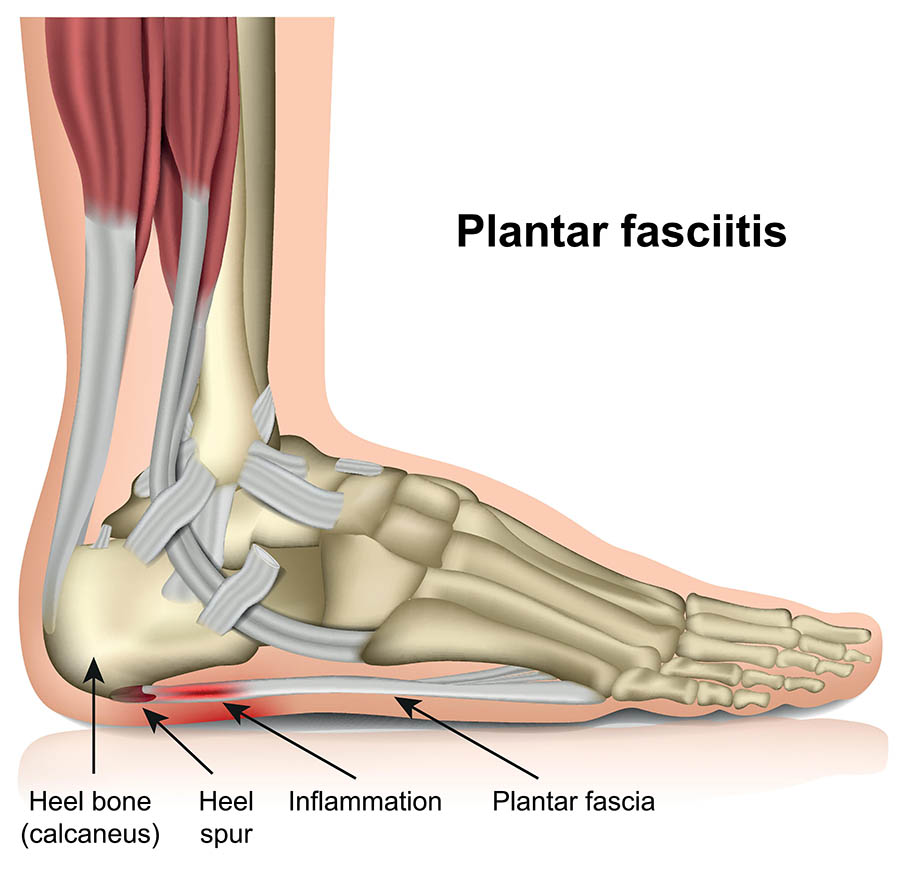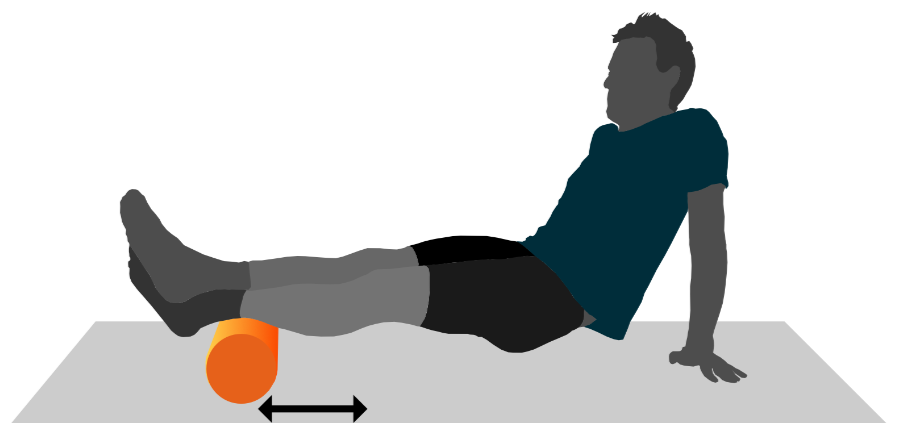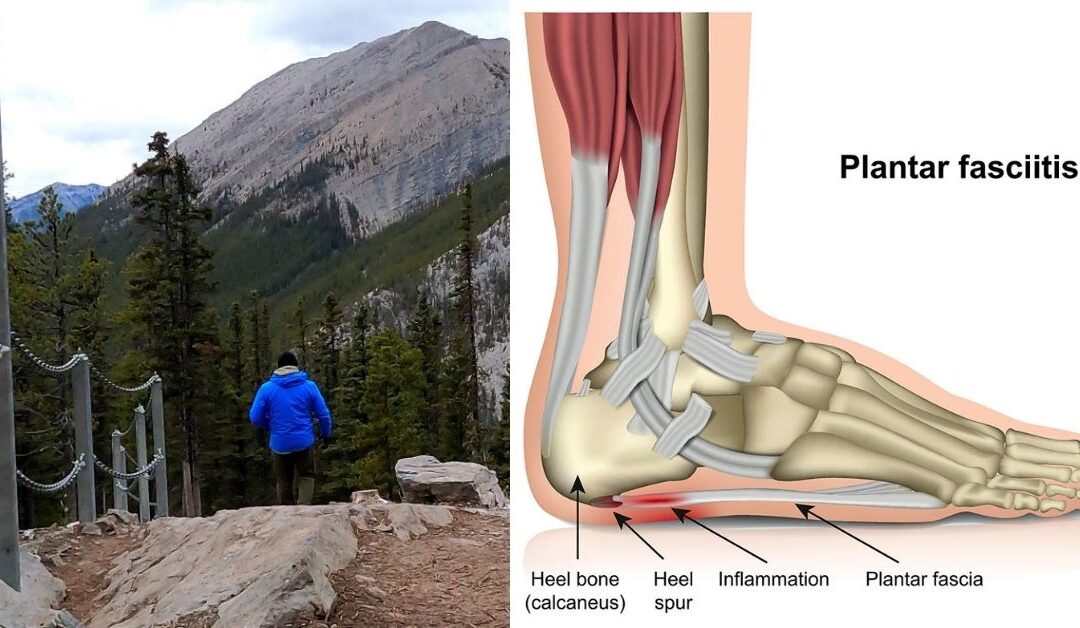I was so close to the car, only two kilometers left in the last hike of my Alberta trip and it got me. Plantar Fasciitis hit my left heel hard, I felt a stabbing pain in my heel that actually altered the way I walked. This is not something new to me but I haven’t felt it in many years. I guess 50km in 4 days was just too much for my body.
What is Plantar Fasciitis?
According to Staff M. C. 2019 “Plantar fasciitis (PLAN-tur fas-e-I-tis) is one of the most common causes of heel pain. It involves inflammation of a thick band of tissue that runs across the bottom of your foot and connects your heel bone to your toes”. This can cause pain when taking a step in the heel as well as the sole of the foot. The pain can range from annoying to severe and sometimes even prevent you from walking. Usually it heals in a few days and can often get better as the day goes on. I find the worst pain in the morning or after a long period of inactivity.


How do you get it?
Plantar Fasciitis can be developed in a few ways but is often a combination of a few. Overuse is usually the straw that breaks the camel’s back. Someone who takes up a new activity that requires extended walking or running all at once will cause the plantar fascia to be overworked and become inflamed. The overuse can be accelerated by having tightness in the calf and foot and also being overweight.
In my case I started walking 10-15km a day from nothing. I am 20-30lbs heavier than I should be and was carrying a 20lb pack. To do some quick math that’s an additional 15-16 thousand steps caring 40-50lbs more than my feet should have to. It’s an equation for something to give out.
How do you fix it?
Time to get back in the gym for rehab and strengthening. I was lucky that it didn’t cut my trip short. Moving forward I need to be smarter about my body and what I am putting it through. The first thing I started with was rest. Driving back home took a few days and it was easy to rest my leg behind the wheel of a car. After 3 days of inactivity I can now start with mobility. I like to use a foam roller for the calf, a lacrosse ball for the plantar fascia and a was or rocker for stretching.
From my understanding the pain is caused by a tightness in the calf, heel and foot. To bring back mobility to this area I start with a calf smash on the foam roller. There is no specific amount of time to spend here and I usually listen to my body. It will tell me when there is a release in the tissues. If you are not as comfortable with this then aim to spend 1-2 min working out the knots and sore spots.
From there I move to rolling out the plantar fascia on the lacrosse ball. This is PAINFUL. Start by stepping on the ball with as much of your body weight as you can bare. This tendon is strong and will require force to release. Once you have done that, roll your foot back and forth across the ball. The pain will subside a bit, this means it’s working. Next place the ball at the base of your heel and step with as much pressure as you can, then flex your toes up and down 10-15 times slowly.
Lastly, you can use the way to do a standard calf stretch both straight and bent knee. This should feel good and relaxing. Now you can test. Try walking normally around and take notice of the pain. There should be a reduction and you feel you can move normally. It may take a few sessions of this to start to notice improvement but it will come. Repeat this process 2-4 times per day for the fastest recovery.

How to avoid it in the future?
This process is for fixing the issue once it has happened, but what about avoiding it all together? The best thing you can do is reduce the amount of weight on your feet. Dropping 10-15 lbs of bodyweight will do wonders for your feet, knees and hips. This will allow you to hike for longer and recover quicker. Strengthening your lower legs will also prevent flare ups in the future. Working on angle and knee stability will increase the workload you can handle. Finally, daily stretching and mobility is maintenance to prevent tightness next time.
The body is an amazing and wonderful vehicle that allows us to interact and explore the world. Like any vehicle we need to service, repair and maintain it so we can use it in the future. Injuries are painful and discouraging especially when we are new to something, but don’t let it prevent you from getting better. There are always ways to overcome injury and get back to what you love doing!
Sources:
Staff, M. C. (2019, December 11). Plantar fasciitis. Mayo Clinic. Retrieved November 5, 2021, from https://www.mayoclinic.org/diseases-conditions/plantar-fasciitis/symptoms-causes/syc-20354846.

